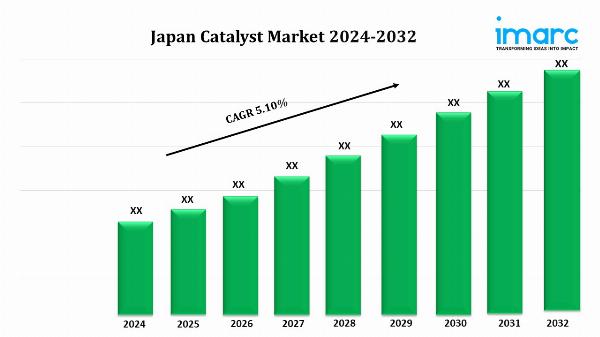3 Reasons to Avoid WFC and 1 Stock to Buy Instead

Since June 2020, the S&P 500 has delivered a total return of 99.4%. But one standout stock has more than doubled the market - over the past five years, Wells Fargo has surged 216% to $80.90 per share. Its momentum hasn’t stopped as it’s also gained 14.9% in the last six months, beating the S&P by 10.4%.
Is there a buying opportunity in Wells Fargo, or does it present a risk to your portfolio? Get the full stock story straight from our expert analysts, it’s free.
Why Is Wells Fargo Not Exciting?
We’re glad investors have benefited from the price increase, but we're sitting this one out for now. Here are three reasons why there are better opportunities than WFC and a stock we'd rather own.
1. Net Interest Income Points to Soft Demand
Markets consistently prioritize net interest income growth over fee-based revenue, recognizing its superior quality and recurring nature compared to the more unpredictable non-interest income streams.
Wells Fargo’s net interest income has grown at a 5.8% annualized rate over the last four years, worse than the broader bank industry. Its growth was driven by an increase in its net interest margin, which represents how much a bank earns in relation to its outstanding loans, as its loan book shrank throughout that period.
2. Low Net Interest Margin Reveals Weak Loan Book Profitability
Revenue is a fine reference point for banks, but net interest income and margin are better indicators of business quality for banks because they’re balance sheet-driven businesses that leverage their assets to generate profits.
Over the past two years, we can see that Wells Fargo’s net interest margin averaged a weak 2.8%, meaning it must compensate for lower profitability through increased loan originations.
3. High Interest Expenses Increase Risk
Leverage is core to the bank’s business model (loans funded by deposits) and to ensure their stability, regulators require certain levels of capital and liquidity, focusing on a bank’s Tier 1 capital ratio.
Tier 1 capital is the highest-quality capital that a bank holds, consisting primarily of common stock and retained earnings, but also physical gold. It serves as the primary cushion against losses and is the first line of defense in times of financial distress.
This capital is divided by risk-weighted assets to derive the Tier 1 capital ratio. Risk-weighted means that cash and US treasury securities are assigned little risk while unsecured consumer loans and equity investments get much higher risk weights, for example.
New regulation after the 2008 financial crisis requires that all banks must maintain a Tier 1 capital ratio greater than 4.5% On top of this, there are additional buffers based on scale, risk profile, and other regulatory classifications, so that at the end of the day, banks generally must maintain a 7-10% ratio at minimum.
Story ContinuesOver the last two years, Wells Fargo has averaged a Tier 1 capital ratio of 12.6%, which is considered unsafe in the event of a black swan or if macro or market conditions suddenly deteriorate. For this reason alone, we will be crossing it off our shopping list.
Final Judgment
Wells Fargo isn’t a terrible business, but it isn’t one of our picks. With its shares topping the market in recent months, the stock trades at 1.5× forward P/B (or $80.90 per share). This valuation tells us it’s a bit of a market darling with a lot of good news priced in - you can find more timely opportunities elsewhere. Let us point you toward one of Charlie Munger’s all-time favorite businesses.
Stocks We Would Buy Instead of Wells Fargo
Market indices reached historic highs following Donald Trump’s presidential victory in November 2024, but the outlook for 2025 is clouded by new trade policies that could impact business confidence and growth.
While this has caused many investors to adopt a "fearful" wait-and-see approach, we’re leaning into our best ideas that can grow regardless of the political or macroeconomic climate. Take advantage of Mr. Market by checking out our Top 9 Market-Beating Stocks. This is a curated list of our High Quality stocks that have generated a market-beating return of 183% over the last five years (as of March 31st 2025).
Stocks that made our list in 2020 include now familiar names such as Nvidia (+1,545% between March 2020 and March 2025) as well as under-the-radar businesses like the once-micro-cap company Kadant (+351% five-year return). Find your next big winner with StockStory today.
Discover the 3 compelling reasons to steer clear of WFC and seek out an exciting alternative investment with this expert's top pick for a stock you should buy instead.
An insightful analysis on why investors should steer clear of WFC amidst 3 compelling reasons, highlighting a more promising stock to consider as an alternative investment.
Here's a chiseled commentary on the provided title: Considering avoiding WFC due to its stagnant growth prospects? Embrace an opportune stock like Tesla, with 3 figure-tipping reasons why it should be your investment of choice over fellow flavorless stocks.
Exploring the insightful reasons to steer clear of WFC and discovering that pivotal stock as an alternative investment can serve well-informed traders with this article's ethical guidance.
Navigating the investing landscape, it's prudent to stay away from WFC due to its weakened global market positioning and potential regulatory risks. Instead of jumping aboard a flagging ship like that by foregoable choice—opt into this promising stock offering one-of reluctance advantages.
Exploring the rationale behind avoiding WFC and uncovering a compelling alternative stock is presented in this insightful article.
Titled '3 Reasons to Avoid WFC and 1 Stock You Should Buy Instead,' this thought-provoking commentary presents a compelling rationale for abstaining from one investment, while endorsing an alternative stock choice with potential growth opportunities.
Exploring why a shift away from WFC (World Fuel Services) is recommended for investors this year, and uncovering the compelling alternative stock to consider.
Here's a witty comment that perfectly encapsulates the theme of your article: Avoid WFC for reasons beyond 3, and instead stock up on greatness by buying XYZ; delightful analysis with tangible takeaways!
Examining alternatives to WFC becomes expedient given its recent market dynamics; here's a choice stock: trade-wise analysis deserves your attention with 1 compelling investment option revealed.
Embracing the alternatives: 3 compelling reasons to steer clear of WFC and a captivating stock worth considering instead.
Considering the advantages of avoiding WFC for these 3 compelling reasons and investing in a different stock, this article provides valuable insights into smarter investment strategies.
Here's a savvy reminder for investors seeking the聪ardown: 3 compelling reasons to steer clear of WFC and an alternative stock that offers more promising prospects in today’tight market.OMNIS党和觅等 quasi eternally sound strategies are essential!
Here's an insightful take: 3 compelling reasons why you should steer clear of WFC, and 1 stock to consider investing in as a smart alternative with potential for growth.
Choosing alternatives to avoid the Waterfall Corporation (WFC) for its known drawbacks and instead investing in a promising stock can be an informed decision driven by rational analysis.
Take advantage of these 3 compelling reasons why WFC might not be your ideal choice and discover a stock that could generate superior returns.














